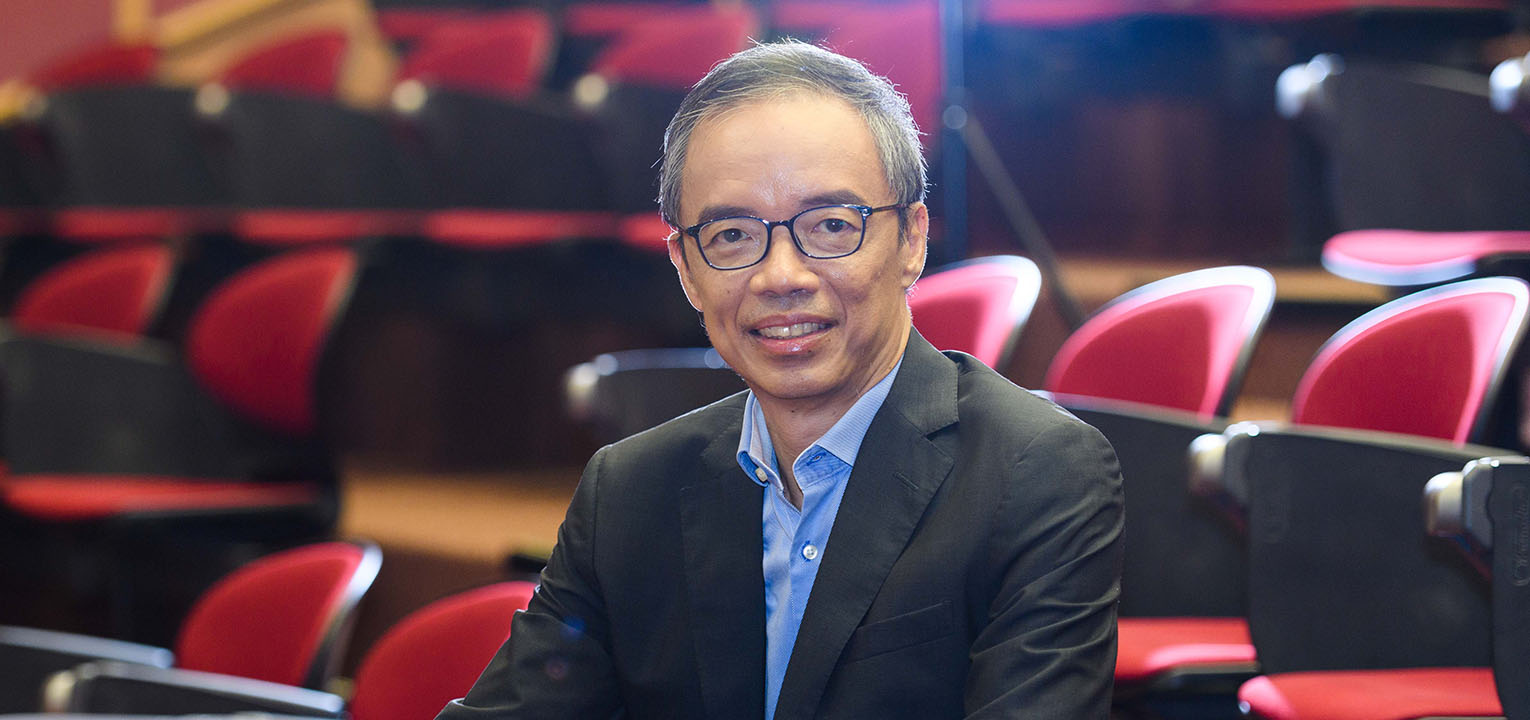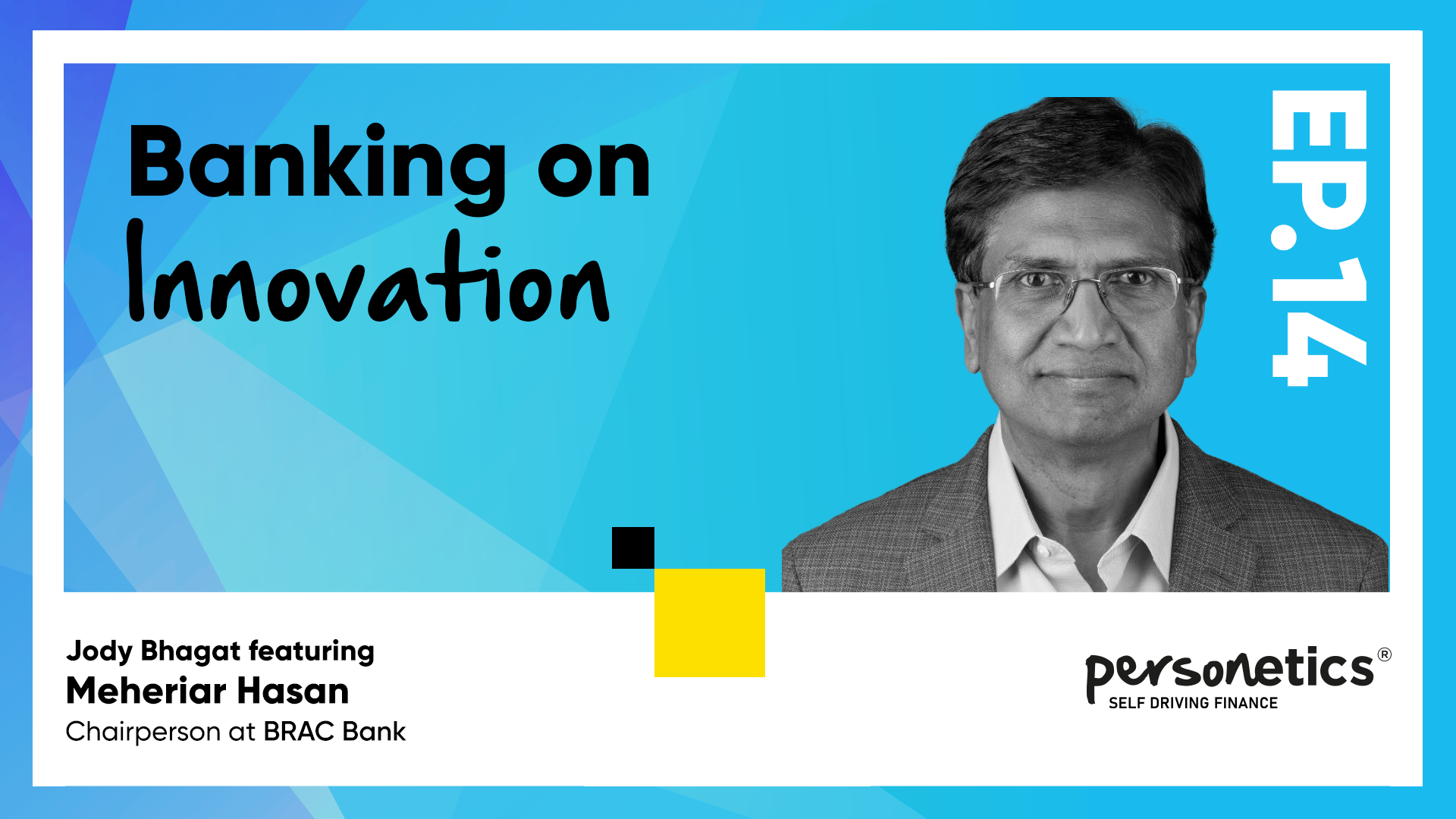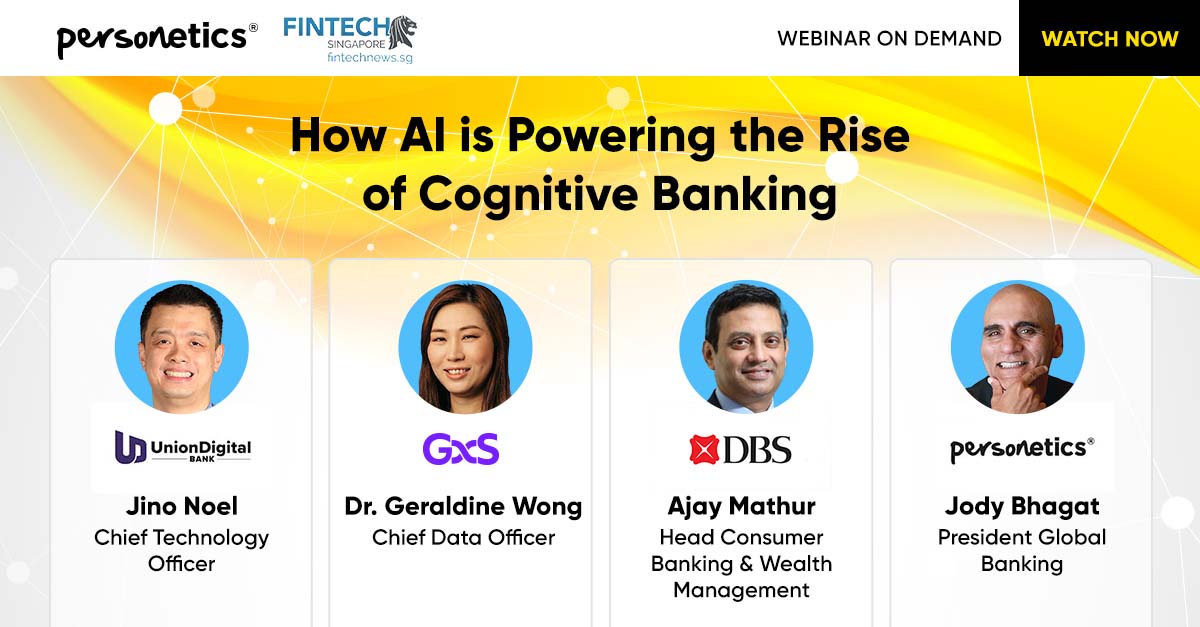August 8, 2025
How Asia Pacific Banks Are Redefining AI-Driven Engagement

By Jody Bhagat, President Global Banking, Personetics
For some time now, I’ve spoken about how Cognitive Banking blends the intimacy of community banking from a long-gone era with the speed, scale, and real-time intelligence of AI. By turning real-time data into intuitive insights, it’s reimagining what banking can be: proactive, personal, easy, and deeply trusted.
At the recent Fintech News Singapore webinar, moderated by Vincent Fong, Chief Editor, Asia, Fintech News Network, I was fortunate to join a distinguished panel of senior executives from leading SE Asian banks. We conducted a fascinating discussion about some of the less discussed opportunities and challenges around AI-driven Cognitive Banking and how they are redefining financial services. Together with Ajay Mathur (Managing Director and head of Consumer Banking Group and Wealth Management at DBS Bank, Hong Kong), Jino Noel (Chief Technology Officer at UnionDigital Bank), and Dr. Geraldine Wong (Chief Data Officer, GXS Bank), we discussed issues such as the potential for fraud and the benefits of aligning tone of voice when engaging with different age groups. Naturally, we also shared our predictions on the impact of AI on the future of banking.
Here’s a short overview of our thought-provoking dialog. Watch the full webinar recording here
Setting New Standards for Customer Engagement
PULL QUOTE: “Ultimately banks are not competing with other banks. Banks are really just competing with all [the other] digital services in the world.” Vincent Fong
First off, we discussed one of the findings of a recent global survey that Personetics conducted. Namely, that 70% of consumers want their bank to proactively analyze their financial behavior and recommend steps to improve financial wellness. And that number climbs even higher among Gen Z, reaching 86%.
In order to compete with the seamless digital experiences that are prevalent across non-banking services, what did my fellow panelists think about the need for financial institutions to embrace the AI-driven approach behind Cognitive Banking?
Striking the Right Balance
Mathur noted that at DBS, they have “been doing AI” for some time now. As he put it bluntly, “If you’re not speaking about AI now, you’re living in a cave”.
But while Cognitive Banking takes AI-driven banking to a whole new level of personalization, Mathur raised the interesting challenge of where to draw the line. “You don’t want to be in your customer’s face.” It’s about finding that balance – personalization that feels natural and not stalker-like. As Fong pointed out, “You don’t want to personalize so much that it’s creepy. On the other hand, you don’t want to be generic.”
The Art of Tone and Context
Personalization isn’t just about what you say – it’s how, when, and where you say it. Wong emphasized the importance of tone: “We think about the tone of voice, the images that we serve our customers on various channels, how we approach them, at what time, and with what manner.”
That level of attentiveness extends behind the scenes too. As Noel pointed out, personalization happens at the backend as well, where AI is quietly capturing additional data points to make smarter models that take advantage of more advanced techniques compared to traditional credit scoring methods. This helps banks to detect customer intent and route enquiries more efficiently. At UnionDigital, Noel confirms that this has led to faster resolutions, reduced friction, and smoother customer experiences, often without a human ever stepping in.
This attention to nuance isn’t just theory. One of our customers shared that even when delivering difficult messages—like alerts about cash flow issues—tailoring tone to the individual’s profile measurably improved satisfaction.
AI, Fraud and the Trust factor
As promising as this technology is, fraud and misuse are real threats. Wong reminded us that trust is still the make-or-break factor. “It comes back to the level of trust that an organization is building with their customers before they roll out [these services].”
And with AI-generated fraud and deepfakes creeping into the picture, she made a clear call to action: “We need to be one step ahead of the game.”
Fong echoed this from a consumer standpoint. Customers still need to feel in control, especially when it comes to their money.
Noel drove the point home with the timeless truth that the best AI in the world needs clean data and ongoing oversight. For banks, that means investing not just in technology, but in robust governance and continuous optimization.
Could AI be Easier for Boomers?
We often assume that older generations will struggle most with AI, but Fong made a great point – “Chatting is natural”.
Compared to tapping through confusing menus, a smart voice- or text-based interface might actually make banking easier for seniors, provided it’s designed well. Noel called this the “billion-dollar question”: how do we design AI that feels intuitive across age groups?
Of course, it’s also about accountability. Wong noted that seniors often prefer speaking to a human because there’s no ambiguity about who’s responsible if something goes wrong. That accountability must also be clearly defined in AI experiences.
The Road Ahead
As the discussion turned towards the future, agentic AI made an appearance. Able to act autonomously on behalf of customers, agentic AI moves beyond simple assistants or chatbots to intelligent agents that can carry out complex, multi-step tasks, like negotiating loans or managing finances in real time.
Mathur captured this shift perfectly, explaining his vision of banking evolving into something much more fluid and on-demand. He pointed out that personalized banking was once restricted to business hours when customers could speak to a person. But with AI, those elevated experiences, and even more, could now be available 24/7 and delivered in a far more interactive way.
Wong pushed that idea further by imagining a banking concierge. “I don’t want to find my own loan rates. I want my agent to negotiate for me.” The concept of your personal AI interacting directly with the bank’s AI to secure the best deal seems like science fiction, but it’s also becoming the next frontier.
But as Noel reminded us, this future depends on laying the right foundations. Good AI starts with good data and like anything dynamic, it needs ongoing tuning, monitoring, and accountability as it adapts to new risks and customer needs.
From my perspective, the most exciting frontier is where we combine the intelligence of digital channels with the empathy of human ones. That’s when AI stops being a tool and starts becoming a trusted partner—advising, acting, and advocating for customers in ways that feel not just smart, but deeply personal.
PULL QUOTE: “The next frontier will combine the intelligence of the digital channel with the empathy of the human channel, resulting in a stronger customer franchise for banks.” Jody Bhagat
A New Era of Engagement
This webinar sparked some really insightful conversations on how AI and cognitive banking are transforming the industry. With expert perspectives and real-world use cases from our friends in Asia Pacific, it offered practical takeaways and fresh ideas.
If you missed the live session, watch the full recording here to catch up.
Want To See How Cognitive Banking and AI Can Transform Customer Engagement?
Request a Demo Now
Related Posts

Why Asia Pacific Banks Must Lean into Cognitive Banking: A Conversation with Dr. Dennis Khoo

What Your Customers Really Want in the AI-Banking Era

Understanding AI’s Impact on Banking

Redefining Financial Engagement in Australia with Open Banking

How Personalized Engagement Drives Business Impact for Banks Across Southeast Asia

Going Big in Japan

Meheriar Hasan, Chairman of BRAC Bank: Know Your Customers to Understand Their Needs

Jody Bhagat
President Global Banking
Jody brings deep operating experience in financial services – managing direct channels, launching digital ventures, and leading digital transformation programs. He was previously a Partner at McKinsey & Company, where he helped financial institutions define and execute digital transformation programs to drive customer growth and operating efficiency. Jody also served in senior digital operating roles at U.S. Bank, Wells Fargo, and Providian. In these positions, he led digital sales and service functions and direct to consumer businesses to deliver organic growth and enhanced customer experience. Jody has an MBA from Northwestern University and a BS in Computer Engineering from The University of Michigan.










